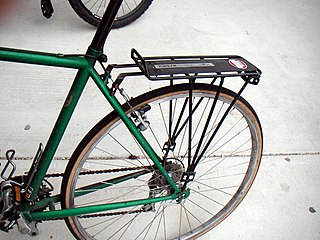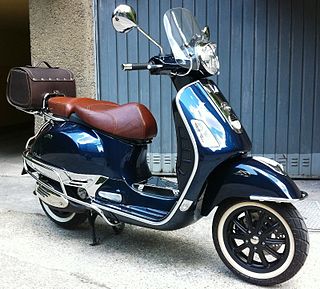
A utility bicycle,city bicycle, urban bicycle, European city bike (ECB), Dutch bike, classic bike or simply city-bike, is a bicycle designed for frequent very short, very slow rides through very flat urban areas. It is a form of utility bicycle commonly seen around the world, built to facilitate everyday short-distance riding in normal clothes in cold-to-mild weather conditions. It is therefore a bicycle designed for very short-range practical transportation, as opposed to those primarily for recreation and competition, such as touring bicycles, racing bicycles, and mountain bicycles. Utility bicycles are the most common form globally, and comprise the vast majority found in the developing world. City bikes may be individually owned or operated as part of a public bike sharing scheme.

A softail motorcycle intentionally looks like vintage motorcycles with a rigid hard-tail frame that has a triangle of steel tubes at the rear axle, like on a bicycle frame, but on a Softail these tubes are actually a triangular swingarm, with the shock absorber(s) hidden, as opposed to clearly visible regular twin shocks on both sides of the rear wheel on standard bikes. Since the introduction of the Harley-Davidson FXST Softail in 1983 as a registered trademark of the Motor Company, softail has become a genericized trademark for other models of cruiser motorcycles with rear suspensions hidden for retro style reasons. This was done even though the rear wheel was often hidden behind bags or exhaust pipes.

Malaguti is an Italian bicycle, scooter and motorcycle company based in San Lazzaro di Savena, founded by Antonino Malaguti in 1930. Producing bicycles until 1958, they then entered the motorcycle market. Noted for their use of small engines in their bikes. In October 2011, Malaguti laid off its remaining employees in Bologna, Italy as the company eventually folded.
The Killinger and Freund Motorcycle was an attempt in 1935 by a group of five German engineers from Munich to design a more streamlined and modified version of the German Megola front-wheel drive motorcycle. The work took three years to complete but the result was impressive. The engine displacement stayed the same as the Megola at 600 cc but was much lighter and more simplified than a standard 100 cc motorcycle of the time.

The R60 and R60/2 are 600 cc boxer-twin that were manufactured from 1956 to 1969 in Munich, Germany, by BMW.

The Kawasaki VN1500 Vulcan Drifter is a fuel-injected, shaft driven and water cooled, part of the Kawasaki Vulcan line of cruiser motorcycles created in the classic style lines of the 1940s Indian Chief. Kawasaki built this model between 1999 and 2005.

The T92 Light Tank, or 76-mm Gun Tank, T92, was an American light tank developed in the 1950s by Aircraft Armaments. It was designed as an airborne/airdropped replacement for the heavier M41 Walker Bulldog while retaining the mobility, protection level, and firepower of the latter. The unveiling of the Soviet PT-76 amphibious light tank pointed out that the future US light tank should be able to swim as well. Making the T92 amphibious was deemed impractical and the light gun tank program was cancelled in June 1958.

A luggage carrier, also commonly called a (bicycle)rack, is a device attached to a bicycle to which cargo or panniers can be attached. This is popular with utility bicycles and touring bicycles.

The Honda PC50 is a moped produced by the Honda Motor Company in Japan from May 1969 until February 1977. The PC50, though much smaller and lighter, had some similar features to Honda's popular C50 /70 /90 Super Cub line, with a step-through pressed-steel frame, a fuel tank under the saddle, a chain cover, and optionally equipped with leg shields,

The Vespa GTS range is a scooter currently manufactured by Piaggio under the Vespa brand.

The NSU Quickly was a moped manufactured by NSU Motorenwerke AG of Germany from 1953 to 1968. More than one million Quicklys were sold.

The Vespa LX is a scooter that was made by Piaggio from 2006 until 2014.

A scooter is a motorcycle with an underbone or step-through frame, a seat, and a platform for the rider's feet, emphasizing comfort and fuel economy. Elements of scooter design were present in some of the earliest motorcycles, and motor scooters have been made since at least 1914.

The Moto Guzzi Triporteurs were wheeled transport motorcycles (triporteurs) of the Moto Guzzi brand. In Italy, they are called "motocarri".

The Piaggio 1 is an electric motorcycle produced by the Italian manufacturer Piaggio.

The Piaggio Boxer is a moped produced by the Italian manufacturer Piaggio.

The Piaggio Sì is a moped produced by the Italian manufacturer Piaggio.

The Gilera CB1 is a moped produced by the Italian manufacturer Gilera from 1975 to 1989.


















